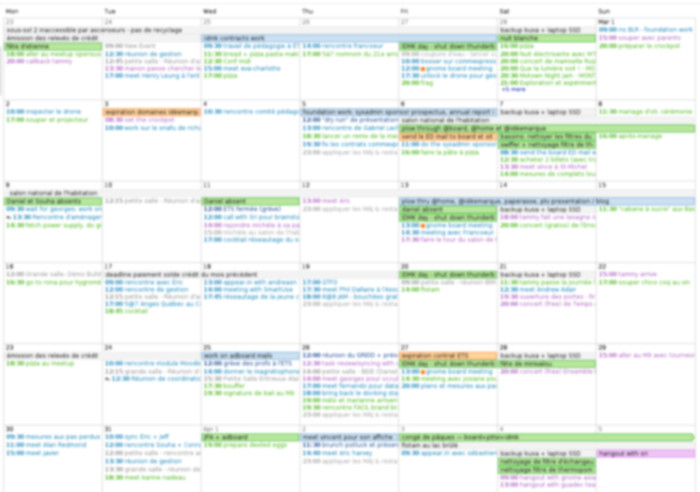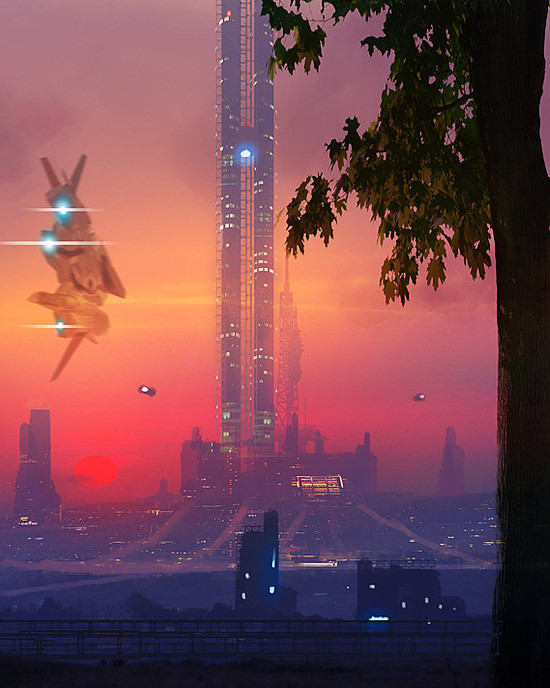As I hinted in my retrospective in February, 2014 has been crazy busy on a personal level. Let’s now take a look at 2014-2015 from a GNOME perspective.
When I offered my candidacy for the GNOME Foundation‘s Board of Directors in May last year, I knew that there would be plenty of issues to tackle if elected. As I was elected president afterwards, I was aware that I was getting into a demanding role that would not only test my resolve but also make use of my ability to set a clear direction and keep us moving forward through tough times. But even if someone tries to describe what’s involved in all this, it remains difficult to truly grasp the amount of work involved before you’ve experienced it yourself.
For one thing, I can say that running a branding & management consulting business at the same time as you’re steering an established public charity like the GNOME Foundation is definitely not easy.

Throughout the year, I went through moments of great joy and periods of deep exhaustion where I cursed Firefox’s bug 60455 — working everyday until 1-2 AM (and waking up 5-6 hours later), for months on end, to get things done. Since 2015, my GTG todo list has consistently been at 4x my normal “healthy” quota. For example, in March, I was at 190 actionable tasks and a total of 520 tasks. Whew! So, in the name of sanity, I had to slow down some of my business activities and withdrew almost all of my involvement in the Pitivi project this term (I’ll be writing a news update blog post soon, I promise!).
I did not compromise on my involvement with the GNOME Foundation because I felt a huge responsibility towards my teammates and towards the Foundation Membership who elected us. Most of the board members, in addition to their daily work, underwent significant personal challenges during the year: relocating, career changes, family matters, all sorts of things that can affect one’s life. And yet, with the limited bandwidth we had, the Board soldiered on and accomplished many feats. I consider myself lucky to have had such a competent and deeply caring team of people to work through one of the busiest years GNOME has had yet!

What also keeps me motivated is the incredible strength of our community, the technical excellence of our platform and the fundamental need for a GNOME “desktop” (or GNOME OS) to exist. More than ever, we need Free and affordable computing for everyone. If proprietary vendors, DRM, the industry shift towards “renting” (rather than owning) software and the Snowden revelations taught us anything over the years, it’s that we need to be the truly free system that people can trust for all their computing needs, online and offline. Many have their heads in the clouds, but we need to keep our feet on the ground and be the bridge between the sky and earth—the safe base where people will come back to.

For that reason, I’m pretty excited by our friends at Endless who are shipping a radically different desktop computer running GNOME and a set of applications that will run offline, designed to make the lives of millions (billions!) of people easier in the developing world. I’m proud of our little cousin, elementary, for shipping a new version of their OS—even as an established project with lots of momentum, we can still learn a lot from what they’re doing, and we certainly appreciate their involvement in our shared technologies. Fedora Workstation, with its refined focus, is something else I’m pretty happy about. With sandboxing, OSTree and Builder in the works, I’m looking forward to GNOME OS becoming a reality. We need something rock solid and for which we can sculpt the user experience from the ground up, something which also serves as a reference and entrypoint for new contributors willing to create applications for the exciting GNOME ecosystem.
We’ve made major strides towards creating a stable and refined platform over the past few years. We have our work cut out for us in a number of areas and I look forward to us tackling them as a community. For example, one thing I’m passionate about is having a “bulletproof” OS that can handle the most demanding creative workloads, without the user needing to worry about the system’s resource usage. I should be able to have Firefox (or Web/Epiphany) running at the same time as GIMP, Inkscape and Pitivi without an exabyte of RAM or having the kernel/graphics subsystem go unresponsive due to one application hoarding resources. I know we can do better in this space. With our unparalleled ability to oversee changes through the whole stack and upcoming technologies like containers & sandboxing, we have the potential to be the most advanced OS in the world—we just need to seize this opportunity.
There are also new fields of computing that we are poised to explore as a free desktop: virtual reality—bringing a new meaning to the term “virtual desktops”—is certainly the next big step in “office computing” (including productivity and creative work, entertainment, etc.—not just gaming). We should investigate VR as the next big evolution of the desktop. Imagine getting rid of the limitations imposed by computer multi-head monitor frames…

We should tackle these things one step at a time, together. It takes many small efforts to steer a ship this big, and the Foundation is there to support the community every step of the way.
Here is a snapshot of what the Foundation’s Board of Directors were up to this year:
- Dealing with over 3700 emails
- Held 25+ regular board meetings, on the phone or in person
- In addition to those, we held a few “special meetings” for topics like adboard outreach and ED search to drain the swamp. Therefore, in practice, we have been meeting more often than the already fast-paced bi-weekly meetings schedule.
- Exchanged over 24,000 lines of IRC discussion within the board
- Resolved the cash-flow problem (a.k.a. financial/success crisis) that occurred in the spring of 2014. We collected on every single outstanding invoice for OPW and will be announcing more about this soon.
- Dealt with two very serious complaints brought to our attention — one of them is not fully resolved yet, but we’re working on it.
- Represented GNOME at various conferences (GUADEC, SFD, GSoC Mentors Summit, OSCON, FOSDEM, LGM, GNOME.Asia, LinuxCon North America, LinuxCon Europe, linux.conf.au and probably a bunch of others I’m forgetting).
- Negotiated with Groupon for six months before the trademark opposition filing deadline. As we reached the deadline and could wait no longer, we prepared and launched a public fundraiser and awareness campaign. This initiative worked above all expectations, with more than 100K USD raised within a day and Groupon immediately capitulating upon seeing the incredible public support we were able to muster. We got coverage in a number of media outlets, including the World Trademark Review magazine. We hope that our experience stands for the proposition that companies must respect free software communities, and we’re already seeing our situation held up as an example to support that.
- Reached out to current (and past) advisory board members on the phone or in person.
- Sought new sponsorship opportunities
- Set up a kanban system to keep track of the “big picture” of long-running projects and action items.
- Started the hunt for an Executive Director, including forming a search & hiring committee
- Reviewed & approved budgets and reimbursements for various events
- Reviewed & approved various trademark use requests
- Started work on prospecting new sources of funding for the GNOME sysadmin role
- Provided advice on fundraising for the Telder font
- Signed two legal agreements with the Software Freedom Conservancy for the transfer of Outreachy — more news on this later
- Administered OPW (including legal and financial aspects), until the migration to Outreachy under the SFC was completed
- Worked on various aspects of codes of conduct
- Initiated work on a Privacy policy
- Provided support for GNOME conferences, including GUADEC, GNOME.Asia, the Boston Summit and the West Coast Summit
- Signed a deal with the WHS for handling funds in Europe — more news on this later
- Various ongoing financial and legal tasks
- Transferred the ownership of various assets (including domain names such as gnome.gr)
- Responded to various press or events organization inquiries, phone calls, etc.
- Apologized to people for not moving fast enough on some matters 😉
I can tell you, like anyone who has worked on a board of directors without an Executive Director for the entire term, that I have developed a tremendous amount of respect and patience towards the work done by each volunteer and team in the GNOME community. There is so much that needs to be done to keep the GNOME Project running, it would not be possible without your help. Thank you, everyone!
Comments
2 responses to “President’s Report — The State of the GNOME Foundation”
That was a truly inspiring post you’ve put up. It truly inspires me and raises the level of my respect for Gnome to see such wonderful dedication from the people running it.
With regards to making a rock solid desktop, I would make a few comments about Gnome Shell. Since Gnome Shell’s inception, I’ve noticed a considerable effort to streamline and make it more efficient – a much appreciated effort. That’s led to the removal of alot of features, preferences, customizability and menus in the base Gnome Shell and it’s packages (most notably in Nautilus). Now, I understand that these reductions are counterbalanced, at least in the Shell, with all the functionality that can be added through shell extensions. That’s really a wonderful and original concept: having a very slim desktop and you just add to it exactly the features that tailor it to your needs. I love where this is going. I just find that there is a problem in your implementation of the Shell Extensions. There’s two issues that can be improved upon:
I am not a coder but am very technically minded and I was interested in learning to make my own extensions and updating some extensions that were broken as new versions of Gnome Shell were being released. I was very hard pressed to find literature and instructions on how to go about making shell extensions. Most of what I understand about how they work, I’ve had to ascertain by looking at what other people wrote and observing their code. You should put out more resources with regards to synthax/howtos/standards etc or if you have them already, make them more prominent and accessible to the community. Put a link on the Gnome Shell website. Maybe even put up some video tutorials on writing them. When you update the synthax/standards in shell extension design, you should list the changes, to make it possible for the community to update their favorite plugins. Finally, looking at the comments on the github of various gnome shell extensions, I noticed that some extensions were breaking because of some small change you guys are doing in the syntax from one release of the shell to another. This puts developers in a position where they have to constantly update the syntax and a lot have stopped (for various reasons: maybe they haven’t updated to a newer version of the shell or lost interest in the project). The community is losing a lot of good extensions this way.
Personally, I wouldn’t use Gnome Shell it’s released it but after I’ve added 15 of my favourite extensions, I get a work environment that’s unrivaled by any other: neither in Windows, MacOS nor in Linux. That’s how much I love my extensions. For me, having to hunt around for fixes of the extensions that were broken during the upgrade is very destabilizing and makes upgrading to a new version of Gnome Shell something that I tend avoid. I understand that the shell extensions platform is still evolving and that changes in synthax and standards are sometimes unavoidable but I think that if you don’t stabilize the standards of your extensions, the people who value their extensions are not going to want to update their shell. I’m guessing that that’s not a outcome you guys desire either.
I just wanted to put that out there. I really love the work you guys are doing. It’s innovative and very out of the box. I wish you all the best.
Thank you Fadi.
I agree, the extensions system is an under-publicised feature, because—from what I’ve been told—there are insufficient resources to polish it (especially the user experience of the extensions website and the developer experience, as you have noted). I would like to see this change as GNOME 3 matures.